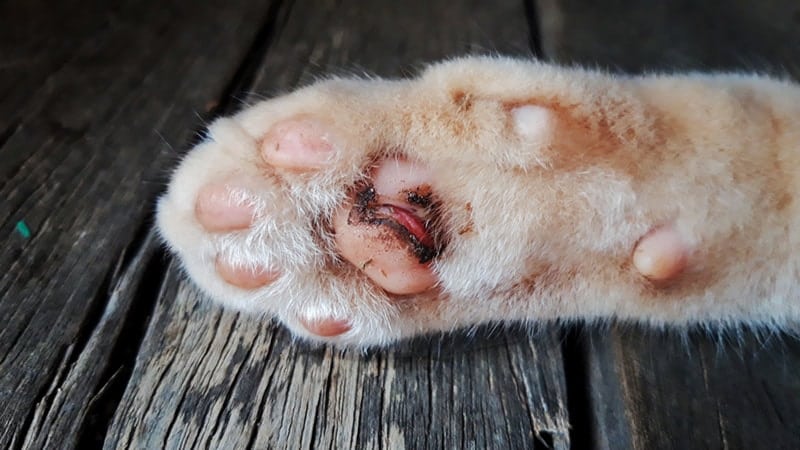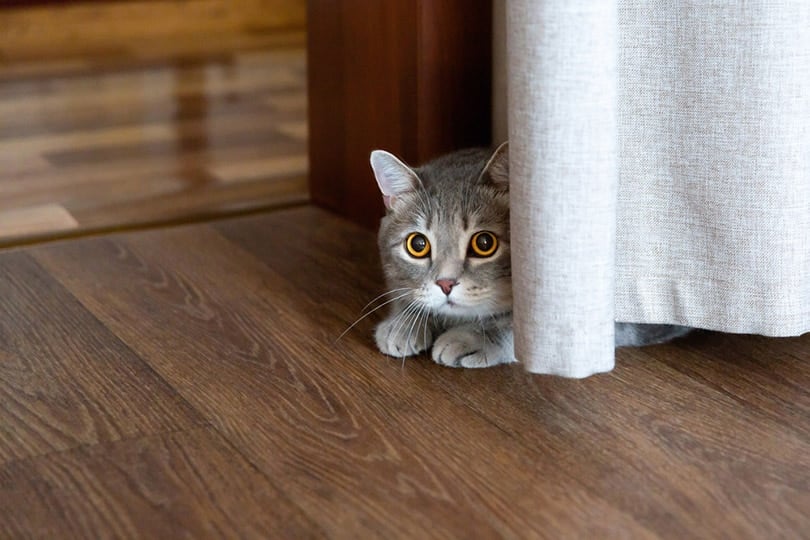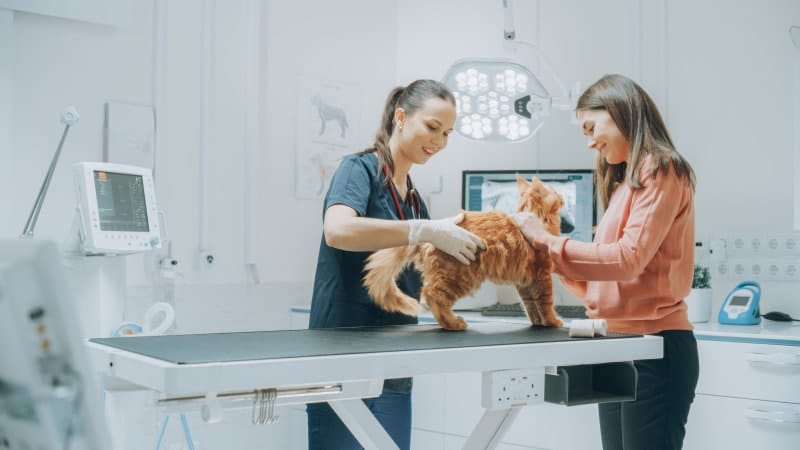Disclaimer: This text has been fact-checked and reviewed by a professional veterinarian utilizing info accessible on the time of assessment. Nonetheless, the aim of this text is to not change a veterinary examination and recommendation however moderately present a normal information to medical and behavioral situations. Cat homeowners are urged to hunt tailor-made recommendation for his or her pet from a veterinary skilled. The views and opinions expressed on this article are these of the author.
It’s at all times a worrisome second once we discover one thing fallacious with our pets. We don’t like to consider our beloved feline mates being injured, damage, or feeling unwell, particularly as they’ll’t converse to us to tell us what might have occurred or how they’re feeling. Nor can they perceive our providing of reassuring phrases to them in the identical method a baby or companion can.
In case your cat has began limping but they’re nonetheless leaping and working round, chances are you’ll be questioning what could possibly be fallacious with them. The truth is, you would possibly assume nothing is actually fallacious in any respect since they’re nonetheless darting round.
That is the place completely different communication and understanding wants to come back in. Your cat can’t let you know what’s fallacious, however limping is a positive signal that they should get checked out by a vet, even when they’re nonetheless working and leaping. Let’s have a look at a number of the potential causes.

Why Is My Cat Limping however Not Exhibiting Indicators of Ache?
Whereas cats are predatory animals and might typically be thought-about to be fairly ruthless creatures, they fortunately and fearlessly hunt mice, birds, and different small prey. Nonetheless, regardless of this, they’re additionally prey animals. Maybe due to the hazard of being one other animal’s goal, an intuition to not present or show ache (harm and sickness) stays in cats, although they’re domesticated and never wild.
Cats received’t clearly specific ache except completely important or the ache or sickness has reached a degree the place they not have the choice however to show their ache or vulnerability.
Whereas there are lots of causes for his or her limping, which we are going to have a look at subsequent, don’t assume your cat will not be in ache or feeling careworn simply because they’re nonetheless leaping, working, and so forth. Normally, your cat is shifting their weight as a result of one thing is sore. Alternatively, there could possibly be a nerve drawback. There are delicate indicators of ache you possibly can be careful for, however any limp needs to be trigger for concern.

Causes of Cat Limping
Cats don’t limp for no motive, so should you see that they’re lame both on their entrance leg or again leg, it wants investigating. The severity can vary from a light limp all the best way to non-weight bearing. Generally, it is only one limb, however not at all times. There are a large number of causes behind the limping, and this can must be checked out and recognized by your veterinarian.
A number of the commonest causes of limping in cats embrace:
- Fracture or dislocation
- Sprain or pressure
- A international physique, resembling a thorn, caught within the paw or paw pad
- Damaged or torn nail
- Ingrown nail
- An infection
- Nerve harm
- Arthritis
- Tumor (anyplace on the affected limb, not simply the paw)
- Cat chunk or abscess
- Ligament or tendon harm
- Bruising
- Wound (cuts, lacerations, or grazes)
- Burns (warmth, chilly, or chemical)

Indicators Your Cat Is in Ache
As mentioned, your cat will present extra delicate indicators of ache than apparent ones. These indicators might develop into extra obvious because the ache continues or will increase, however studying the right way to learn felines is a serious profit to their well being. It means you possibly can act faster and your kitty receives assist sooner as an alternative of the issue worsening and their well-being declining.
- Limping itself is an indication of ache and never the precise drawback or trigger
- Lowered consuming or not consuming
- Sleeping extra/ much less exercise
- Sleeping in a special space than regular
- Behavioral modifications
- Aggression
- Retreating or hiding
- Being extra vocal or louder
- Not blissful once you contact or stroke them
- Pull the affected limb away from you should you attempt to contact or study it
- Licking painful space

Ought to I Go to the Vet?
Limping or every other signal of ache and discomfort is at all times value a visit to your veterinarian or no less than a telephone name, particularly if you may as well see different indicators of discomfort or if the lameness has continued for greater than 12–24 hours. It’s higher to err on the facet of warning. If you are ready to your session, maintain your cat rested.
Therapy for a Limping Cat
To diagnose the reason for your cat’s limp, your vet must examine the problem additional. This could and sure will take quite a lot of routes and will probably be completely different for every cat. There are numerous examination instruments and coverings accessible, however the ones your cat will obtain will probably be depending on the findings and the trigger discovered.
Listed here are a couple of frequent examples of investigations and coverings your vet might prescribe. They could use certainly one of these, all of them, or order further checks and coverings not talked about right here.
- Bodily examination
- Blood checks
- Urine checks
- X-Rays
- Ultrasound scans or MRI
- Additional and extra detailed examination below sedation or anesthesia
- Surgical procedure
- Wound flushing and care
- Bandage or dressing help
- Treatment (oral or injectable), resembling antibiotics and painkillers


Conclusion
Cats are advanced and mysterious animals, and we love them for it. Nonetheless, limping is a positive signal of ache and that one thing is fallacious, even when they’ll nonetheless run round and leap onto the sofa.
The intuition to not seem susceptible is as sturdy at this time in domesticated cats because it was with their wild ancestors and fellow huge cat mates. Don’t ignore a limp pondering they’re okay simply because they’re transferring so much. As a substitute, have them checked over by a vet to stop the scenario from worsening and in order that your cat can obtain the proper therapy moderately than be uncomfortable longer than crucial.
Featured Picture Credit score: Nils Jacobi, Shutterstock



